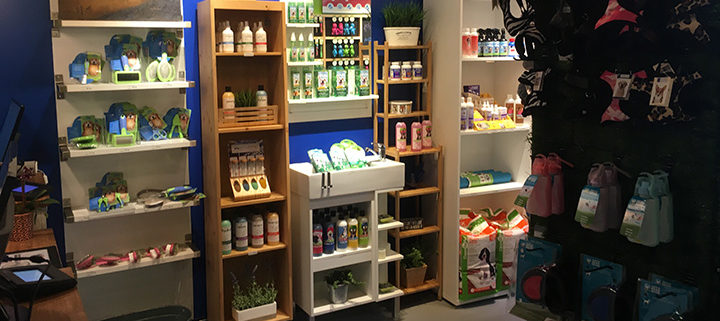Streamlining Inventory Management for Your Small Business
Small Business owners work incredibly hard. Every day there is another challenge and not every day presents a clear answer. Sometimes you have to find your own business solutions. Many of these findings come with the ease of technology. Integrating software applications are the tools for small business owners to compete. These systems will trim down the hours spent on tasks that can be automated. Regardless of your scale of operations, retailers need streamlined inventory management for small business.
Have you ever lost business when items were out of stock? Or lost money due to excess stock? How do you manage inventory during the busy holiday season? Inventory management is the process of supply chain management that maintains the right quantity of products at the right time. Using a streamlined system reduces costs. Inventory management drastically reduces the chances of having an overstocked supply room and boosts sales by ensuring you never run out of merchandise. Small business owners can also track and view inventory in real-time.
Fortunately, for Splash and Dash franchise owners, the company’s proprietary software has built in inventory management for small businesses. The terminal software ensures that the right quantity of items is available on the sales floor or in back-stock. Key metrics can determine products that are becoming obsolete and other variations in the supply chain. Seeing this dynamic in real-time allows franchise owners to avoid spending more on items that sell slowly.
Without inventory management for your small business, you are more than likely using an outmoded system. This is burning time and resources. This article walks small business owners through the fundamentals of inventory management and how it can fine-tune your business.
Get Rid of Obsolete Tools
Many small business owners use customized spreadsheets to track inventory. The reason this doesn’t work is that your inventory manager will have to spend their time finding separate data to plug into various spreadsheets. Re-stocking is also complicated when using spreadsheets. Often, a business ends up continuing unnecessary inventories because they use a single uniform inventory level for entire groups of products. For a true assessment of restocking needs, you will need to make a demand-and-supply model for each individual product.
This is a waste of time when updated inventory management tools can streamline this entire process. By automating, you can capture real-time data for information on the supply chain. This reduces overhead by eliminating unneeded inventory investments. Over time this will result in sizeable savings. With a revamped system you can use a single management tool for both demand and supply. Single-window tools display information on various inventory sources and inform managers exactly when suppliers will deliver. Inventory management software also track restocking needs. This system of inventory management for small business keeps everyone on the same page. You’ll always know what you have, what you need to order, and what is selling.
What Inventory Management Software Should I Use?
The proliferation of various software options is far and wide. The key to finding a good one is keeping it simple. Good inventory management software will inherently reduce costs and improve cash flow. Software should be capable of tracking inventory in real-time, forecast demands, and be accessible to any device. This way you can prevent product shortages for multiple storefronts from your phone. Finding a software that will integrate into your POS system is also important. Equally important is the capability of optimizing your stock room. Warehouse organization utilizing bar code scanning speeds up intake.
Standard Features Should Include:
- Reduce Costs
- Strengthen Cash Flow
- Real-time Inventory Tracking
- Key Metric Analytics to Forecast Demand
- Prevents Production Shortages
- Prevents Excess Stock
- Cloud-Computing (Any Device)
- Integration with POS
- Optimize Warehouse Organization
- Bar Code Scanning
- Multiple Unit Management
The key to differentiating between software options is the type of small business you own. If you are a restaurant, you will want powerful software designed to simplify food costs. A platform that has menu cost functionality and effortless POS integration is your best option. SimpleOrder, Orca Inventory, and ChefSheet are all good places to start researching. Retailers will want a software that synchronizes online stores with the brick-and-mortar. Quality control is a big component too. Retailers top three favorites are Square for Retail, NCR Counterpoint, and Shopify POS.
Optimization Techniques & Practices
Audit Regularly
Even with robust inventory management software, you will still need to periodically count your inventory. Comparing a physical count to what your software is reporting is vital. Some small business owners do this right after the holidays. The idea is to sell everything so you don’t have to count it. Others do this toward the end of the fiscal year so managers have a good prediction for the following year.
Use the FIFO Method
The first in, first out method is an inventory valuation approach based on the cash flow assumption that the first goods purchased will be the first goods sold. This works for most small business. FIFO is the most suitable inventory method accepted by industry accountants. Using FIFO ensures that the inventory asset recorded on your balance sheets closely match the marketplace costs.
Polished Forecasting
Precision is key. Projected sales calculations need to be based on factors like your historical sales figures, market trends, predicted growth in the economy, promotions, and marketing campaigns. This data should be available on software dashboards. Staying on top of this will simplify this task into something as simple as checking your email.
Vendor Discounts
Taking advantage of vendor discounts can be either profitable or lead to excess stock. Use your inventory management software for small business functions by identifying the right time to purchase bulk orders. There is nothing worse than liquidating excess stock after the Holidays because you overbought to take advantage of a vendor discount.
We hope this article helps you clean up the back-stock room and get to the more important parts of owning your business!
Follow Splash and Dash Groomerie & Boutique:
- Website: http://splashanddashfordogs.com/
- Website: https://splashanddashfranchise.com/
- Facebook: https://www.facebook.com/splashanddashfordogs/
- Instagram: @splashanddashfordogs
- LinkedIn: https://www.linkedin.com/in/dan-j-barton-622ab517
- Twitter: splashanddash4dog









